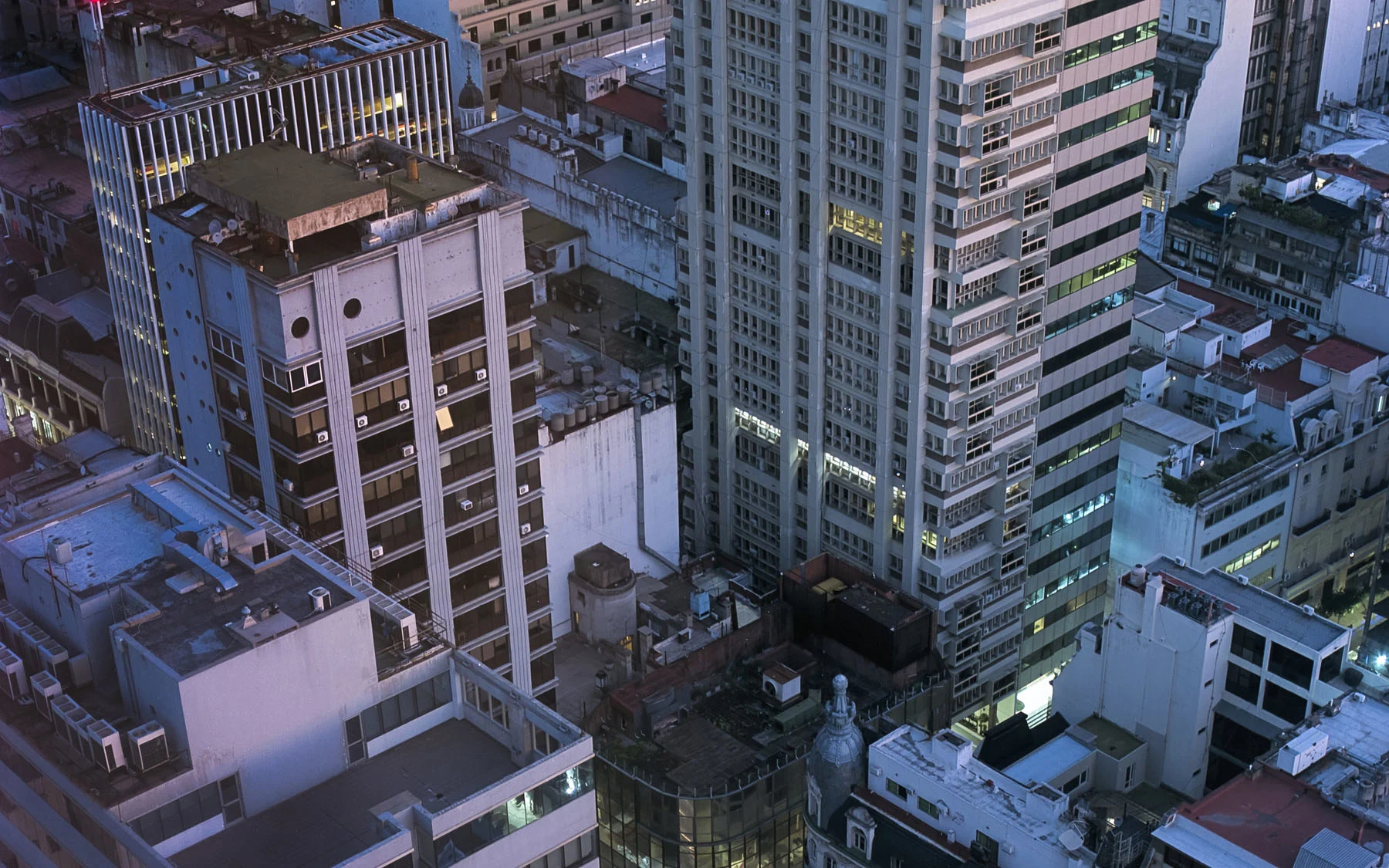

There are no people present in Maxi Magnano’s photos, but they still manage to bring Buenos Aires to life, whether it’s in the buzz of the streets felt through his gritty pictures of the cityscape from above, or the sense of a life being lived just outside the frame in his cinematic, low-light interior shots. He tells Alix-Rose Cowie how he has always used his photography to better understand the city, and how he hopes a viewer will see what he sees, and feel something in the process.
Growing up in a suburban town an hour outside of Buenos Aires, photographer Maximiliano Magnano was uninitiated with the humming streets of the Argentine capital. By now, he’s walked them all. When he first moved to the big city in his twenties, it was his camera that pulled him down main avenues and back alleys, and got him to grips with the intimidating metropolis. He’d spend whole days wandering around, finding his way by getting lost, and taking “way too many” photographs. “Photography was my access to this city,” Magnano says, “It’s a way of being in contact with the world. I know that wherever I go, I’m going to take my camera and I'm going to be interested in looking and paying attention to the place, to its shapes and colors.”
About 10 years ago, when Magnano was just starting out, he took a photo of a gas station at night. It’s not an image he’s published or that he’s used in any significant way, and looking back on it, he even regards it as a bit cliché. But it was the photograph he took when everything clicked: “I understood that I wanted to make images that people can relate to from an emotional standpoint.”


Looking through Magnano’s portfolio or one of his photo books, viewers are often struck by the absence of people. His photographs of Buenos Aires are eerily quiet, save for the buzz of fluorescents or the low, muffled Spanish on a TV in the next room that’s conjured in your mind when looking through his eyes. His subjects are the empty tables of a cafeteria; plastic flowers through a storefront window; a row of unoccupied plastic chairs sat facing a swimming pool in a gym; pictures of Jesus and Maradona taped onto an old tiled wall in the back of a grocer; a newsagents at night. There are no people, but their presence is felt everywhere.
All shot on film, and often in low light, Magnano’s gritty and beautiful images ache with nostalgia. His work is often, and easily, described as cinematic. In fact, director Janicza Bravo credits his photography as a reference for the visual feel of the A24 movie, “Zola,” starring Taylour Paige, Riley Keough and Colman Domingo.

I’ve always made this nostalgic work that’s warm, but right now it feels like the world is more hostile.
Walking the same streets over many years, an itch developed to capture something new. Magnano’s photo book editor had also asked whether he had any images from a wider point of view. “When you are always on street level, you are very close to things,” he says, “and the pictures have this intimate relation to those things.”
It was when he saw a Wolfgang Tillmans photograph taken from an airplane window over a city at night that he knew what he wanted to do. His new thing was waiting for him in the financial district, a few stories up: cityscapes taken at dusk or at night of tall concrete and glass buildings with strings of illuminated windows. “I wanted to make a colder representation of Buenos Aires, and of the idea of a city,” he says, “I’ve always made this nostalgic work that’s warm, but I’m not really feeling that way right now. It feels like the world is more hostile.”

One can imagine Magnano as a lone figure setting up his camera in a desolate parking garage in the middle of the night, watching the city below. But in reality most of his cityscapes are taken from rooftop bars where he’s hanging out with his girlfriend and friends having fun. “I’m not that lonely,” he says. While the city is huge, there aren’t that many accessible vantage points to make images from. What Magnano has found though is that many of these venues have 360 degree views, so he can go to one place and get multiple shots as if he’s rooftop hopping across the city.
“I’ve always been interested in what the images might say about me,” he says. “One of the things I like most about photography is that since you have to be somewhere to take the photo, people can make fictional constructions about your life, and who you are. Most conclusions don't have a lot to do with who I am or how I feel.” Magnano thinks of a photographer as a kind of narrator of the story; he wants people to see what he’s seeing, and how he sees it. “I know that someone's going to feel the same way I do about the thing that I’m seeing,” he says. “Many people won’t, or won’t care, or won’t even like the pictures. But some people will see—I know that.”




